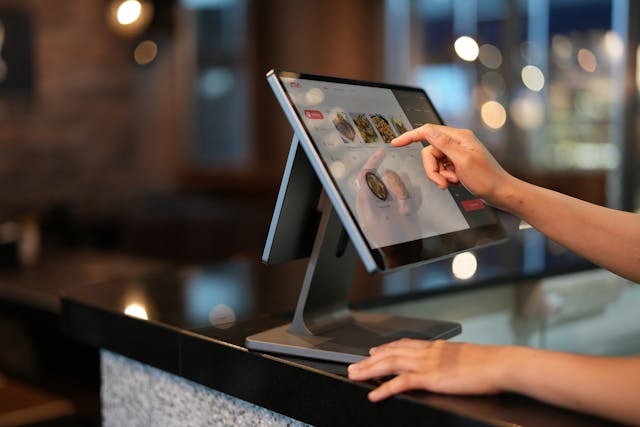Tech Behind Table Turnover: Revolutionizing Restaurant Reservations
Tech Behind Table Turnover: Revolutionizing Restaurant Reservations

The restaurant industry, while rooted in tradition and hospitality, is constantly evolving. One of the most significant changes in recent years has been the rise of online reservation systems. These aren’t just simple digital versions of the old reservation book; they’re sophisticated platforms powered by cutting-edge technology that are revolutionizing how restaurants manage their operations and enhance the dining experience. This article delves into the technology behind these systems and explores how they’re transforming the restaurant landscape.
Restaurant today are facing increased competition, making operational efficiency critical to success. One key metric that restaurants closely monitor is table turnover — the speed at which a table is cleared, reset, and made available for the next customer. With advancements in technology, managing reservations and optimizing table turnover has been transformed. Here’s a look at the tech driving this evolution.
From Pen and Paper to Pixels and Platforms:
For decades, restaurants relied on handwritten ledgers or phone calls to manage reservations. This manual process was prone to errors, inefficiencies, and lost revenue due to no-shows or underutilized tables. Today, cloud-based platforms like Favouritetable have replaced these outdated methods, offering a suite of features that streamline operations and improve the bottom line.
Key Technologies Powering the Revolution:
Several key technologies work in concert to power modern online reservation systems:
- Cloud Computing: Cloud-based architecture allows restaurants to access their reservation data from anywhere with an internet connection. This eliminates the need for expensive on-site servers and provides automatic backups and updates. This accessibility is crucial for multi-location restaurants and allows for real-time monitoring of table availability across different locations.
- Database Management: Robust database systems are the backbone of reservation platforms. They store and organize vast amounts of data, including customer information, reservation details, table layouts, and historical data. This data is crucial for generating reports, analyzing trends, and personalizing the dining experience.
- APIs (Application Programming Interfaces): APIs enable seamless integration with other restaurant management tools, such as POS (Point of Sale) systems, CRM (Customer Relationship Management) software, and marketing platforms. This integration streamlines workflows, eliminates data silos, and provides a holistic view of the restaurant’s operations. For example, integrating with a POS system can automatically track diner spending, allowing restaurants to identify high-value customers.
- Mobile Technology: Mobile apps for both diners and restaurant staff are essential components of modern reservation systems. Diners can easily book tables on the go, while staff can manage reservations, view table availability, and communicate with each other in real-time. Mobile technology also enables features like waitlist management and notifications, improving the customer experience.
- Data Analytics and Reporting: Advanced analytics tools provide restaurants with valuable insights into their business. They can track key metrics such as table turnover rates, peak dining times, popular menu items, and customer demographics. This data empowers restaurants to make informed decisions about staffing, menu planning, and marketing strategies. For instance, analyzing table turnover data can reveal bottlenecks in service and allow restaurants to optimize their seating arrangements.
How These Technologies are Changing the Industry:
The integration of these technologies is transforming the restaurant industry in several ways:
- Optimized Table Turnover: By accurately tracking reservations and table availability, these systems help restaurants maximize their seating capacity and minimize empty tables. This leads to increased revenue and improved efficiency.
- Reduced No-Shows: Automated confirmations, reminders, and waitlist management features help reduce the number of no-shows, a significant source of lost revenue for restaurants.
- Enhanced Customer Experience: Online booking, personalized service, and efficient communication enhance the overall dining experience, leading to increased customer satisfaction and loyalty.
- Data-Driven Decision Making: Access to detailed data and analytics empowers restaurants to make informed decisions about their operations, marketing, and menu planning.
One of the best examples of this technology is Favourite table’s restaurant management software.
Conclusion:
The technology behind online restaurant reservation systems is far more sophisticated than a simple digital booking tool. It represents a fundamental shift in how restaurants operate, manage their resources, and interact with their customers. By embracing these technologies, restaurants can optimize their operations, enhance the dining experience, and thrive in an increasingly competitive market. Cloud computing, database management, APIs, mobile technology, and powerful analytics are not just buzzwords; they are the engines driving the future of the restaurant industry



